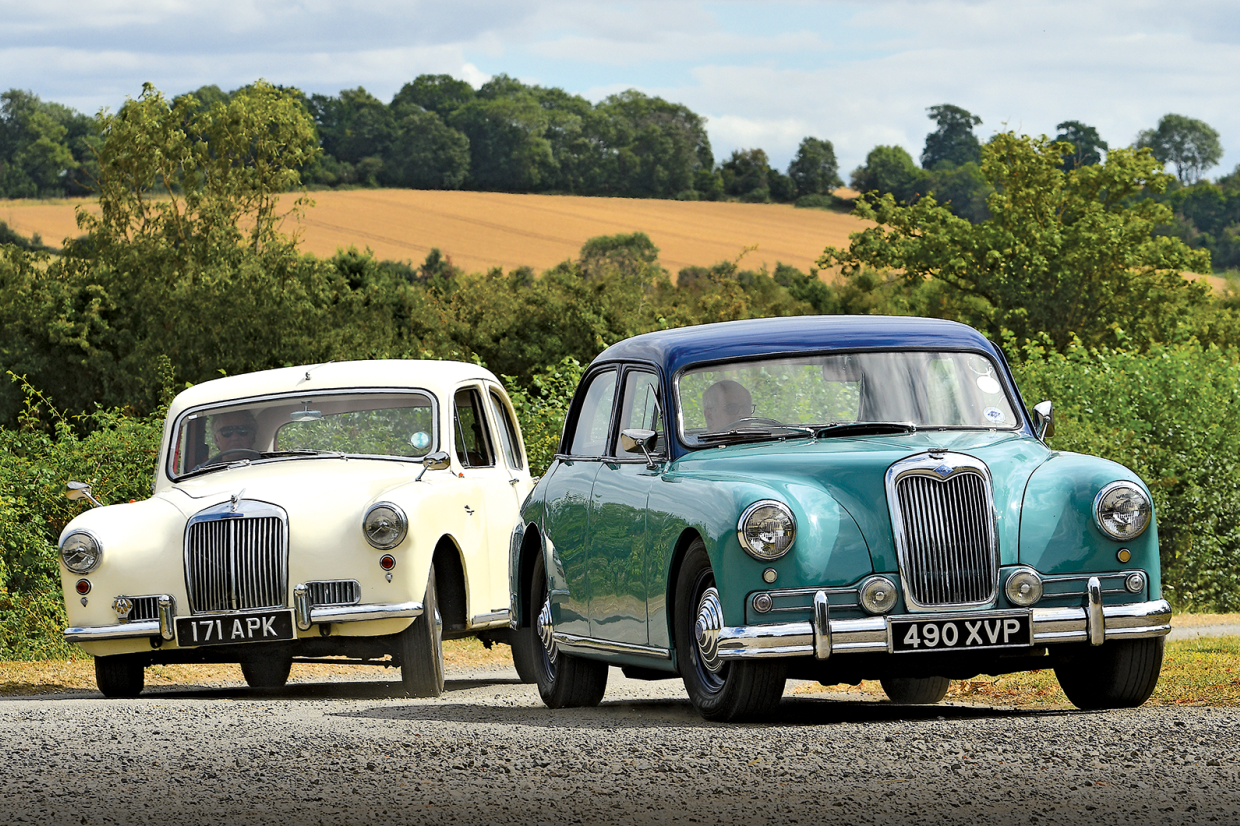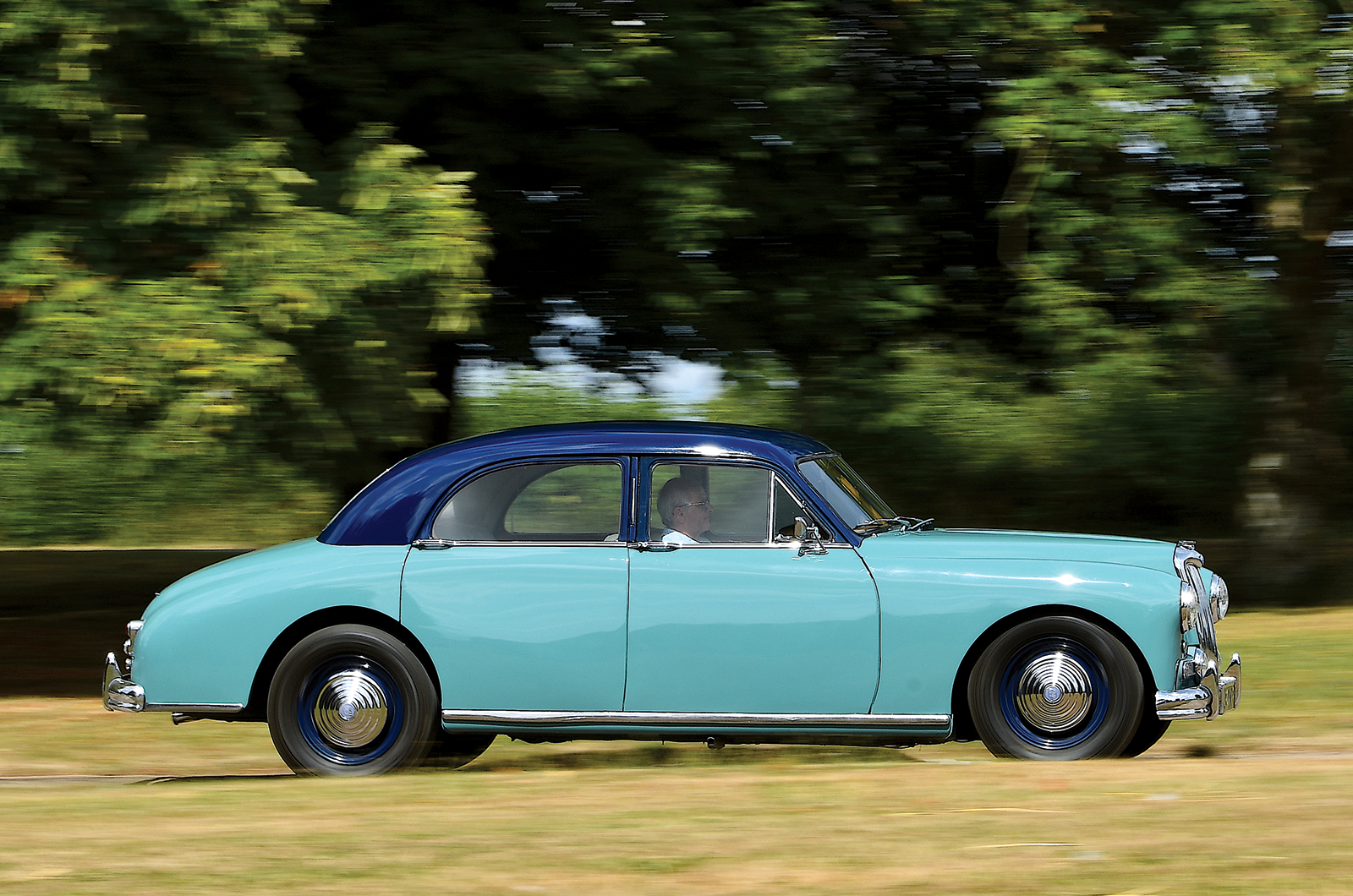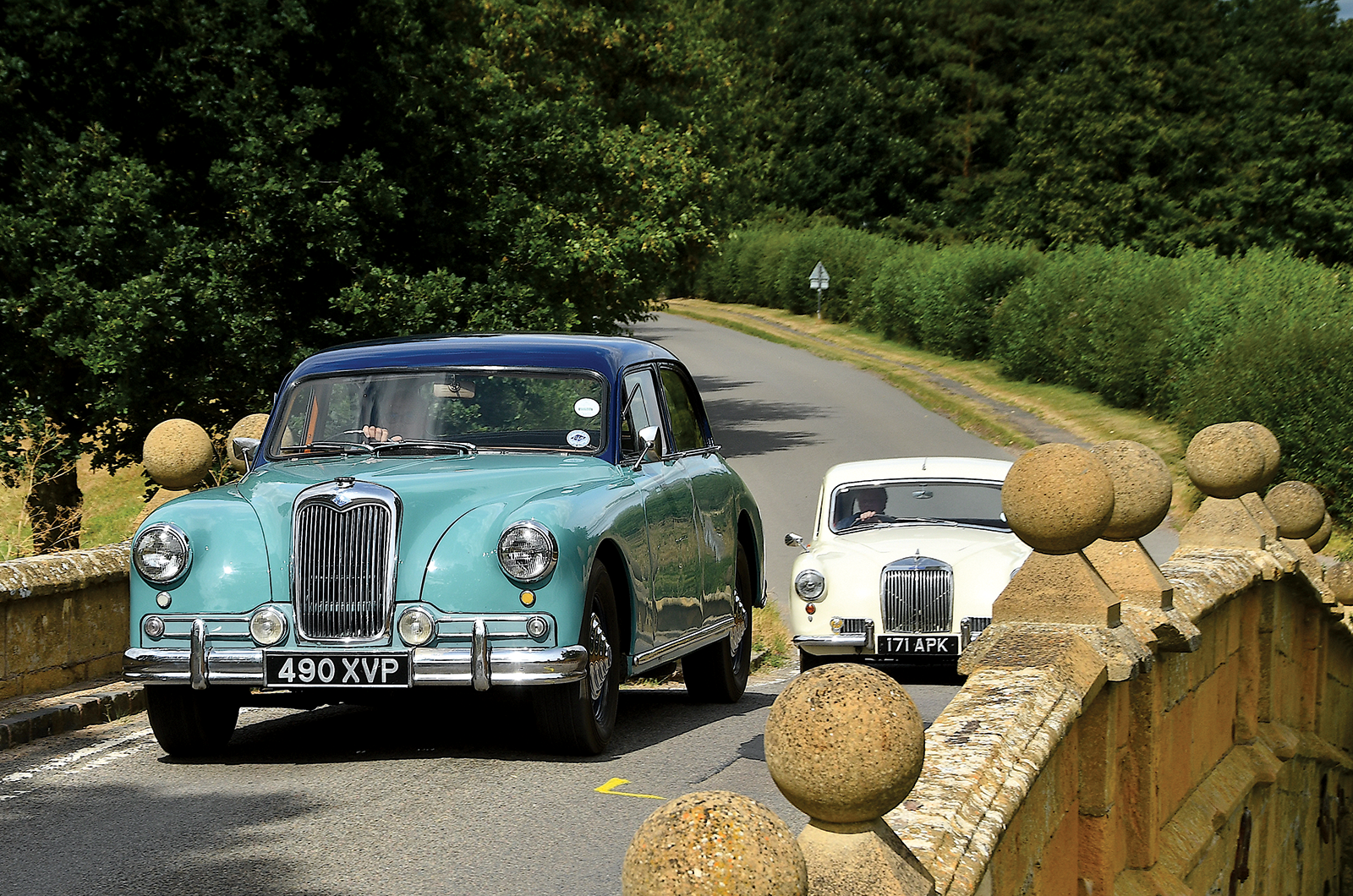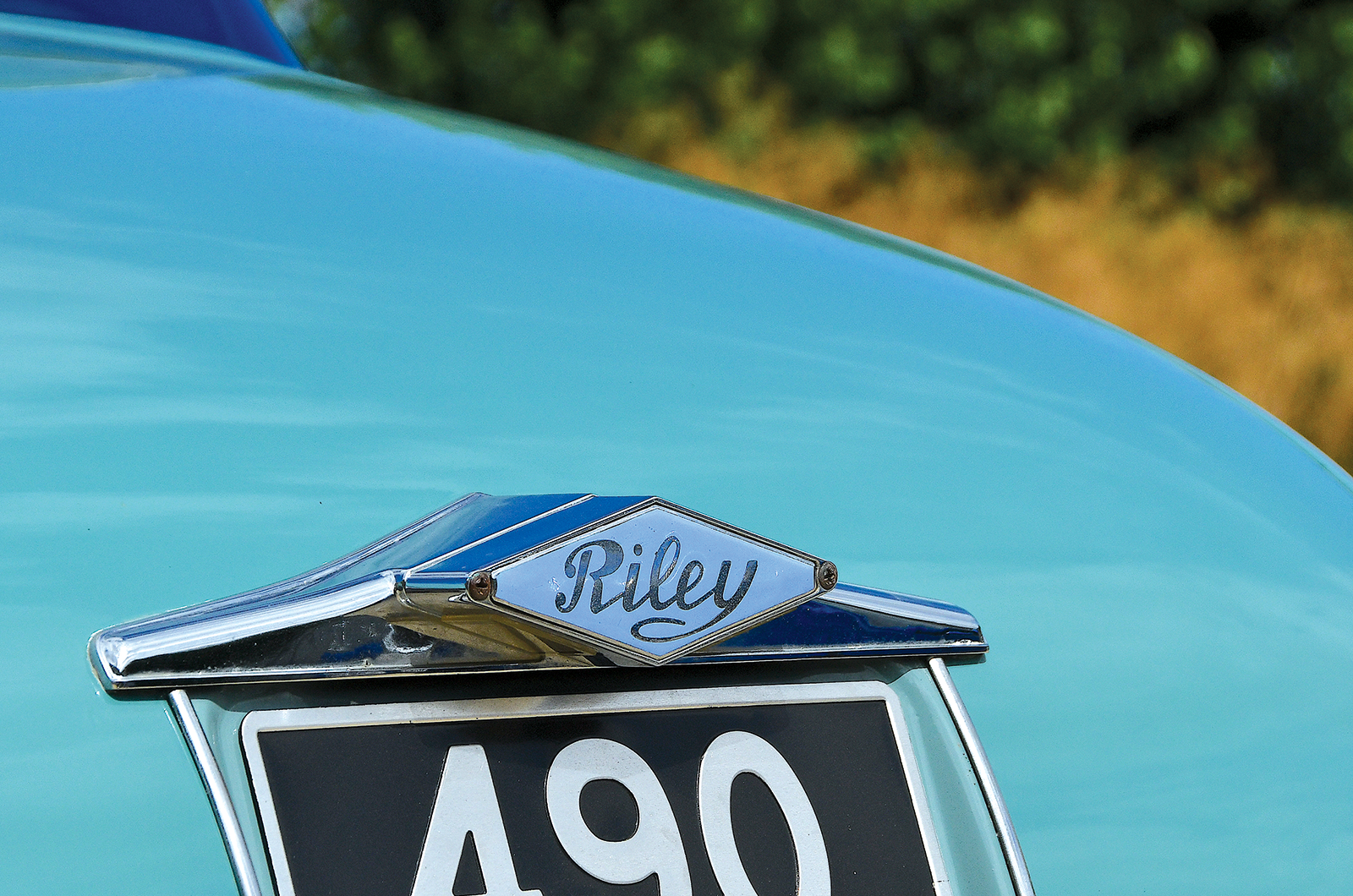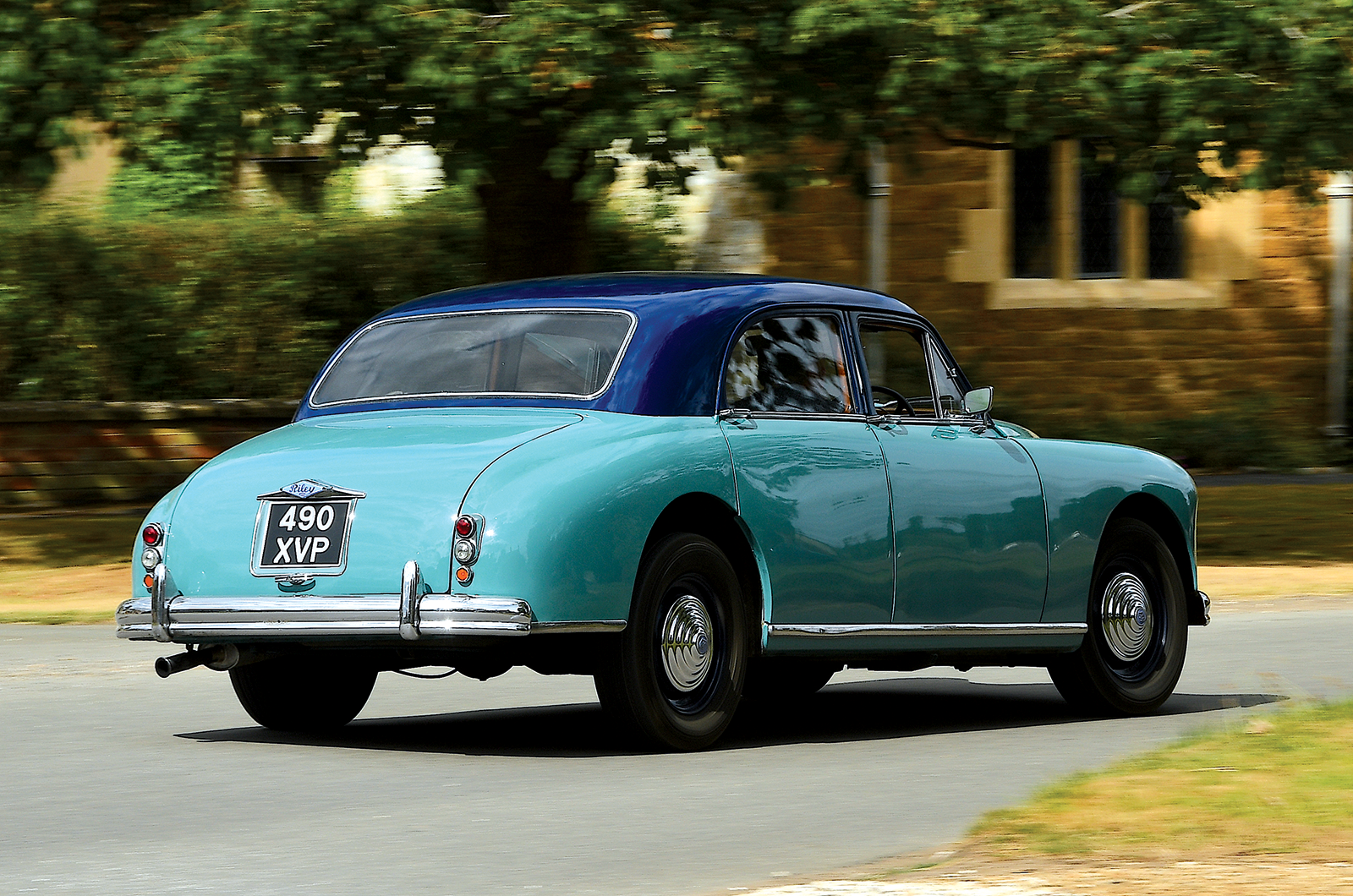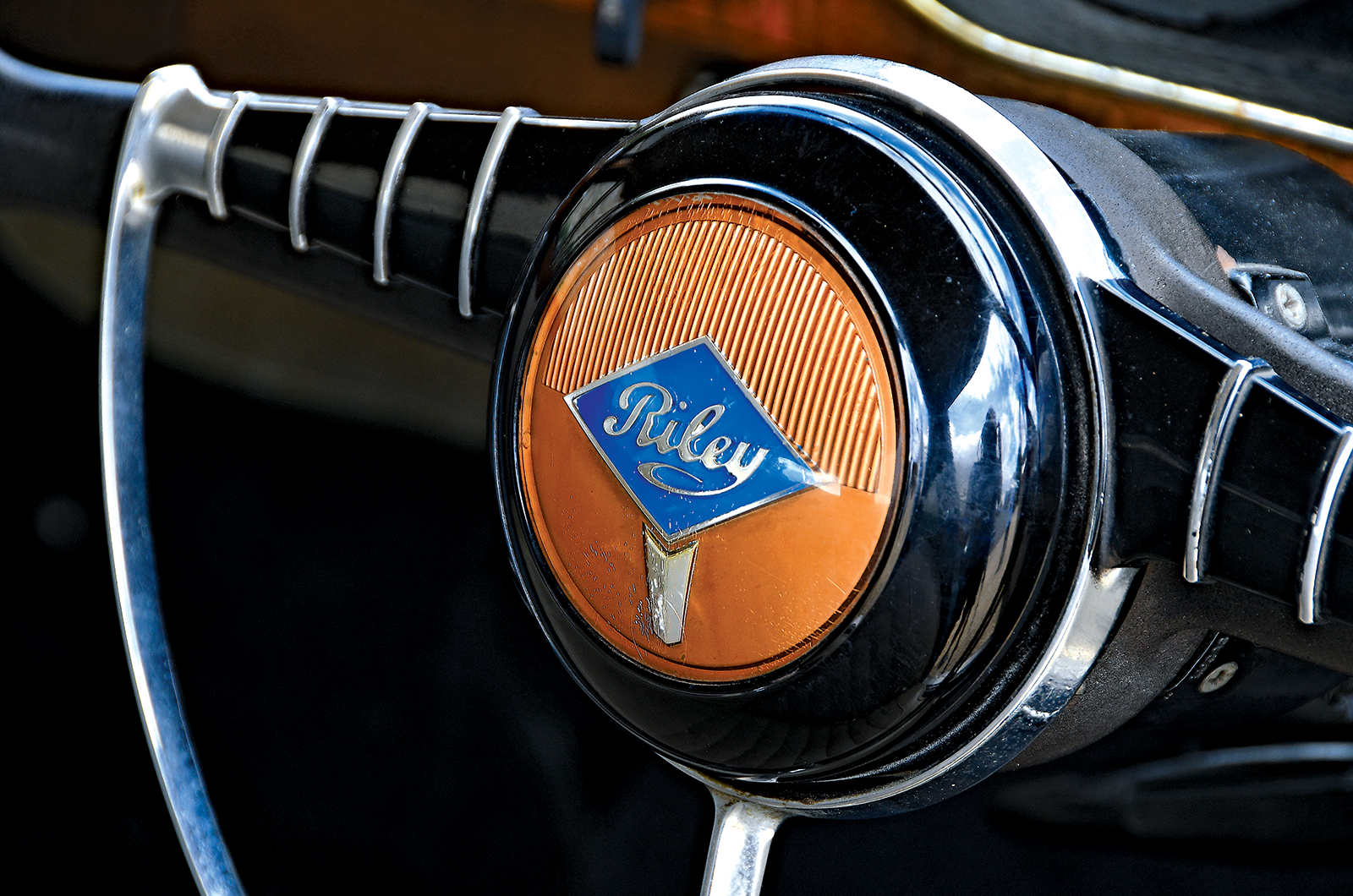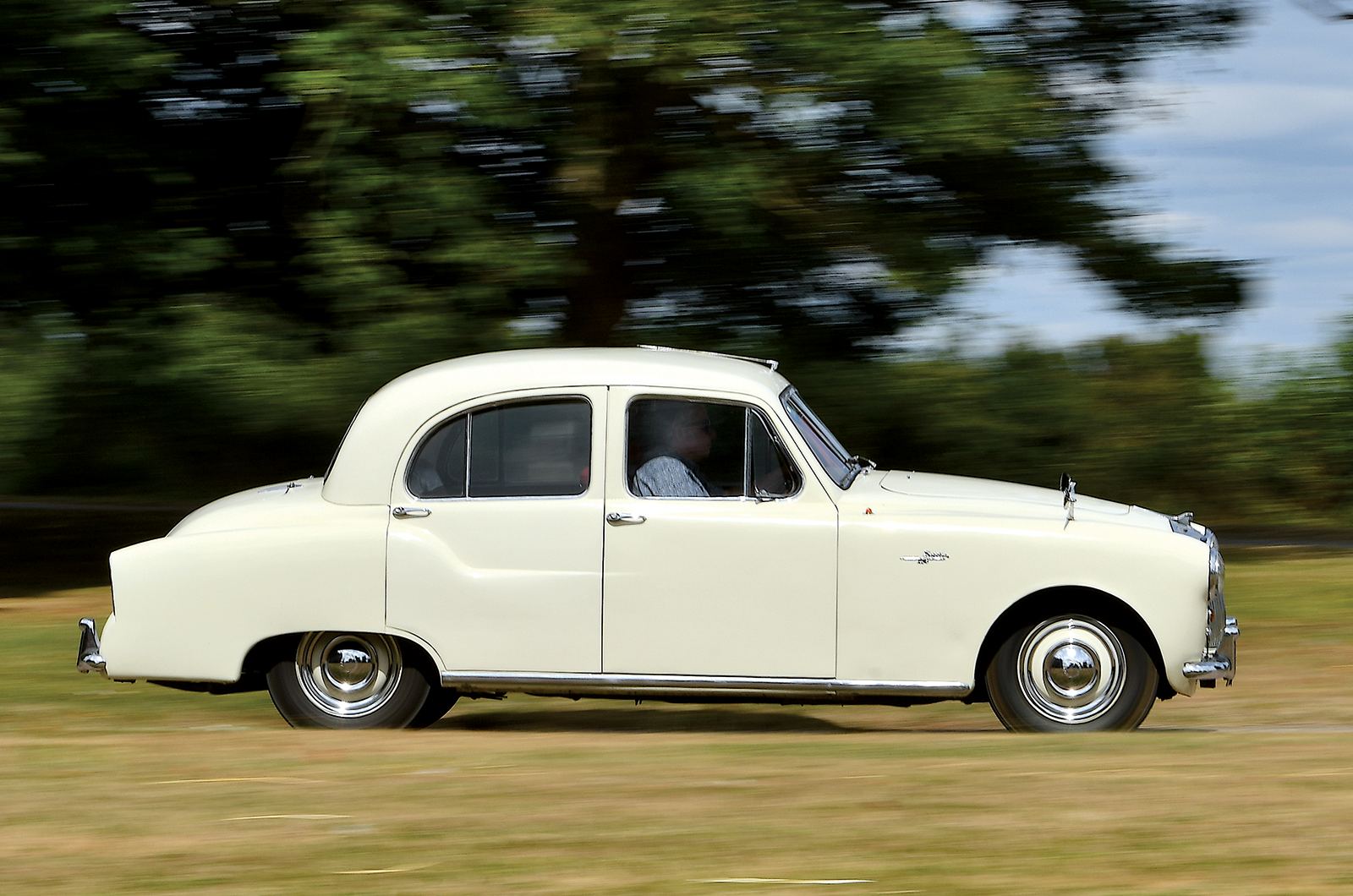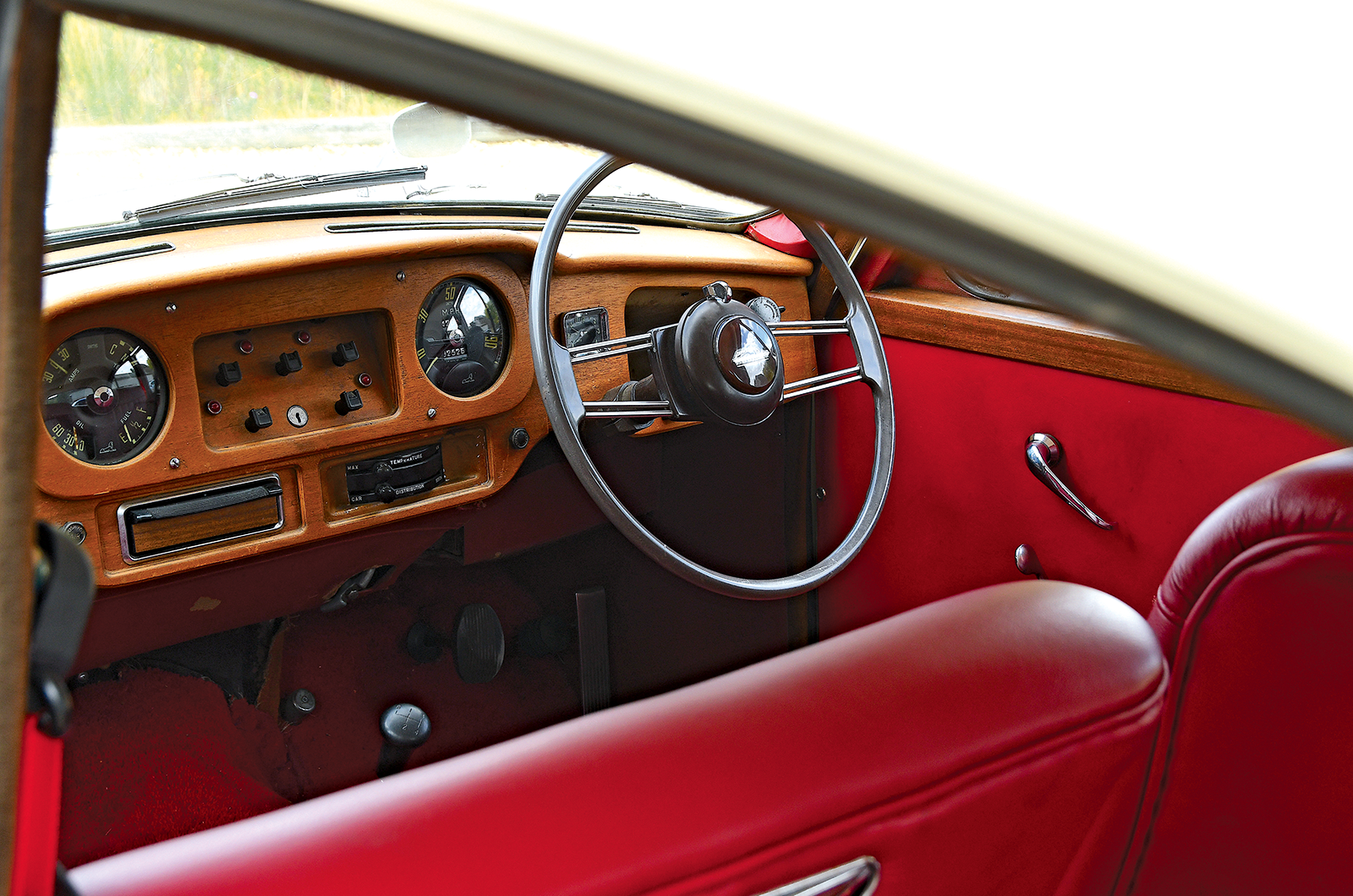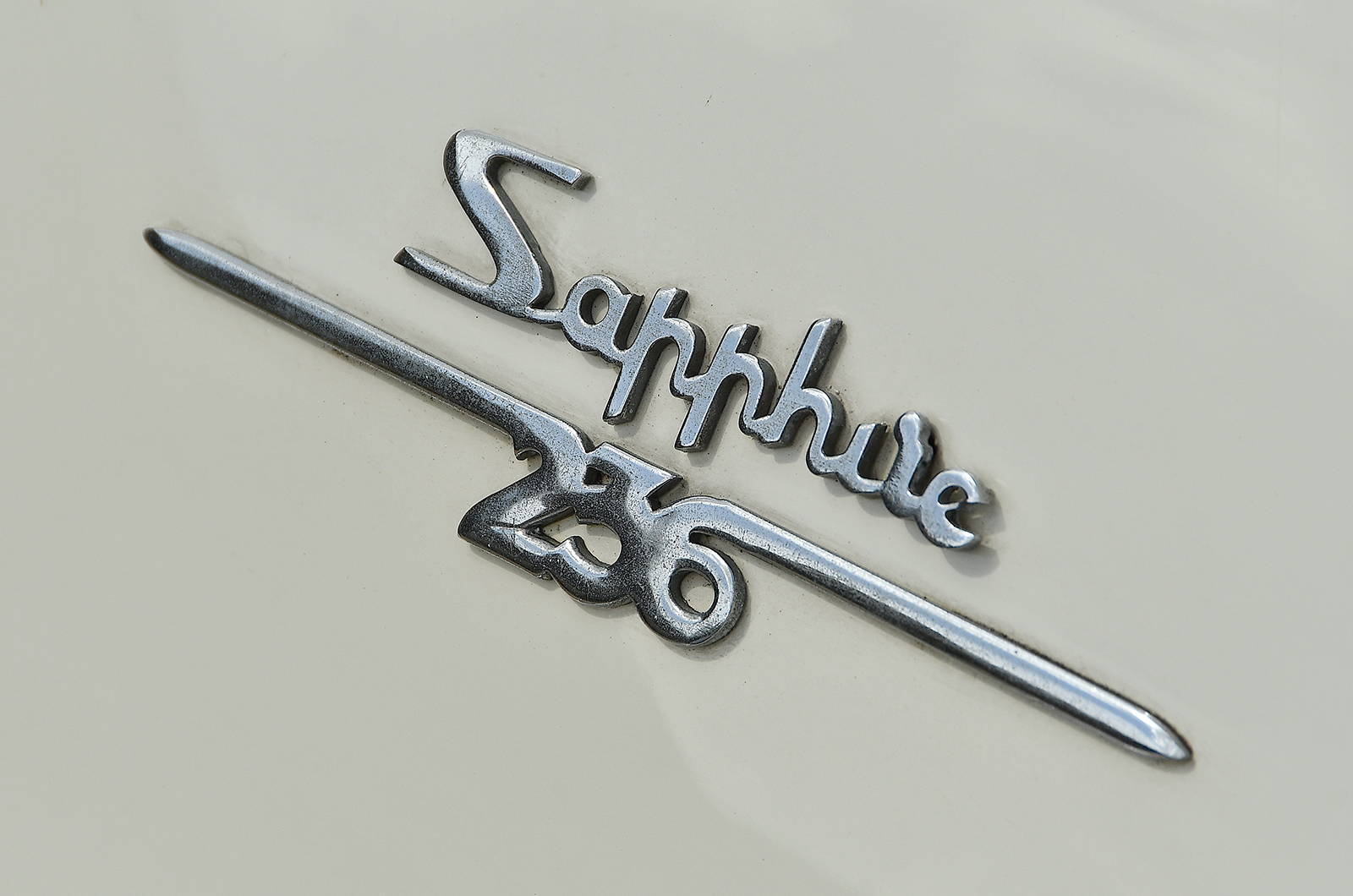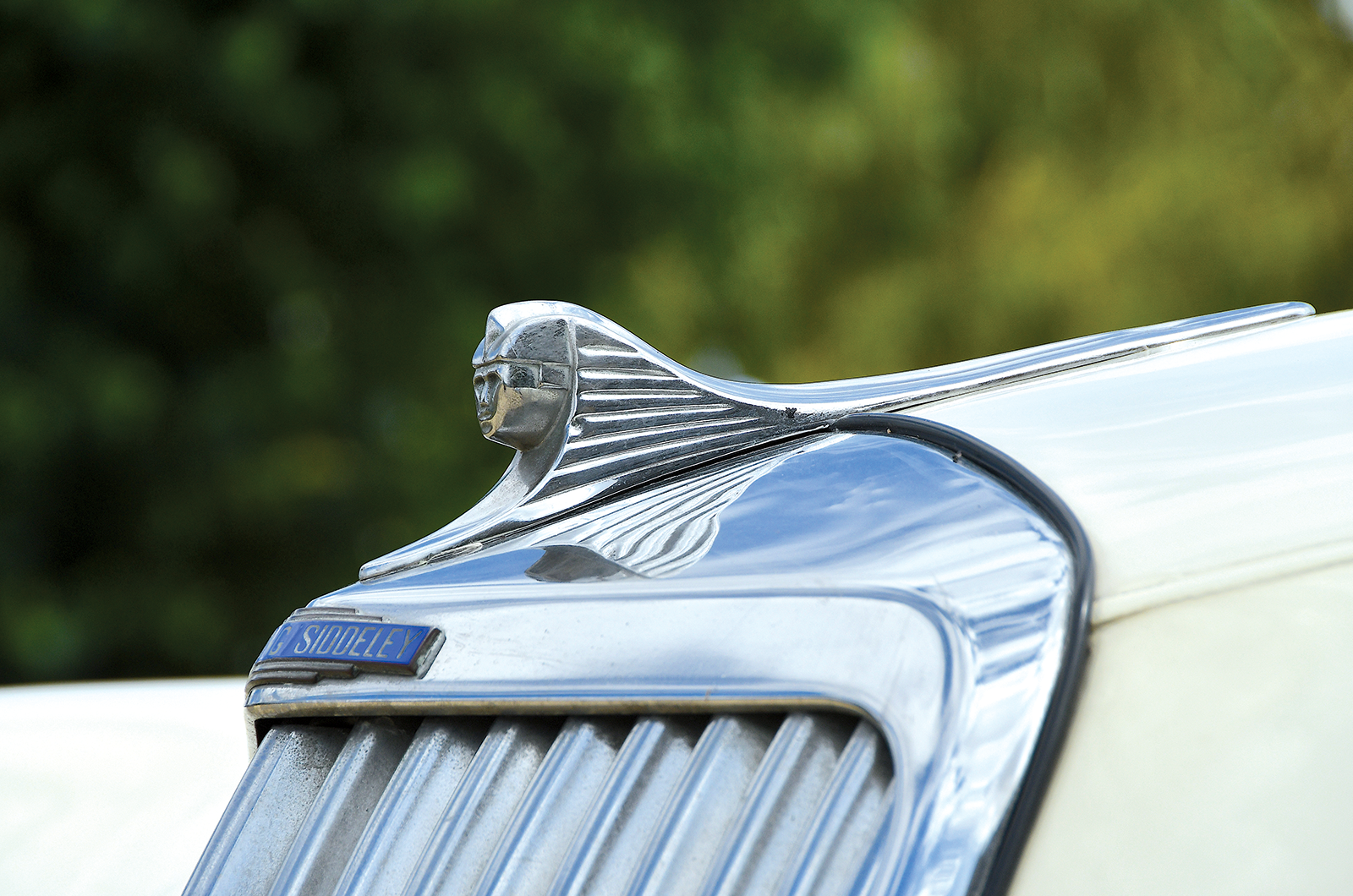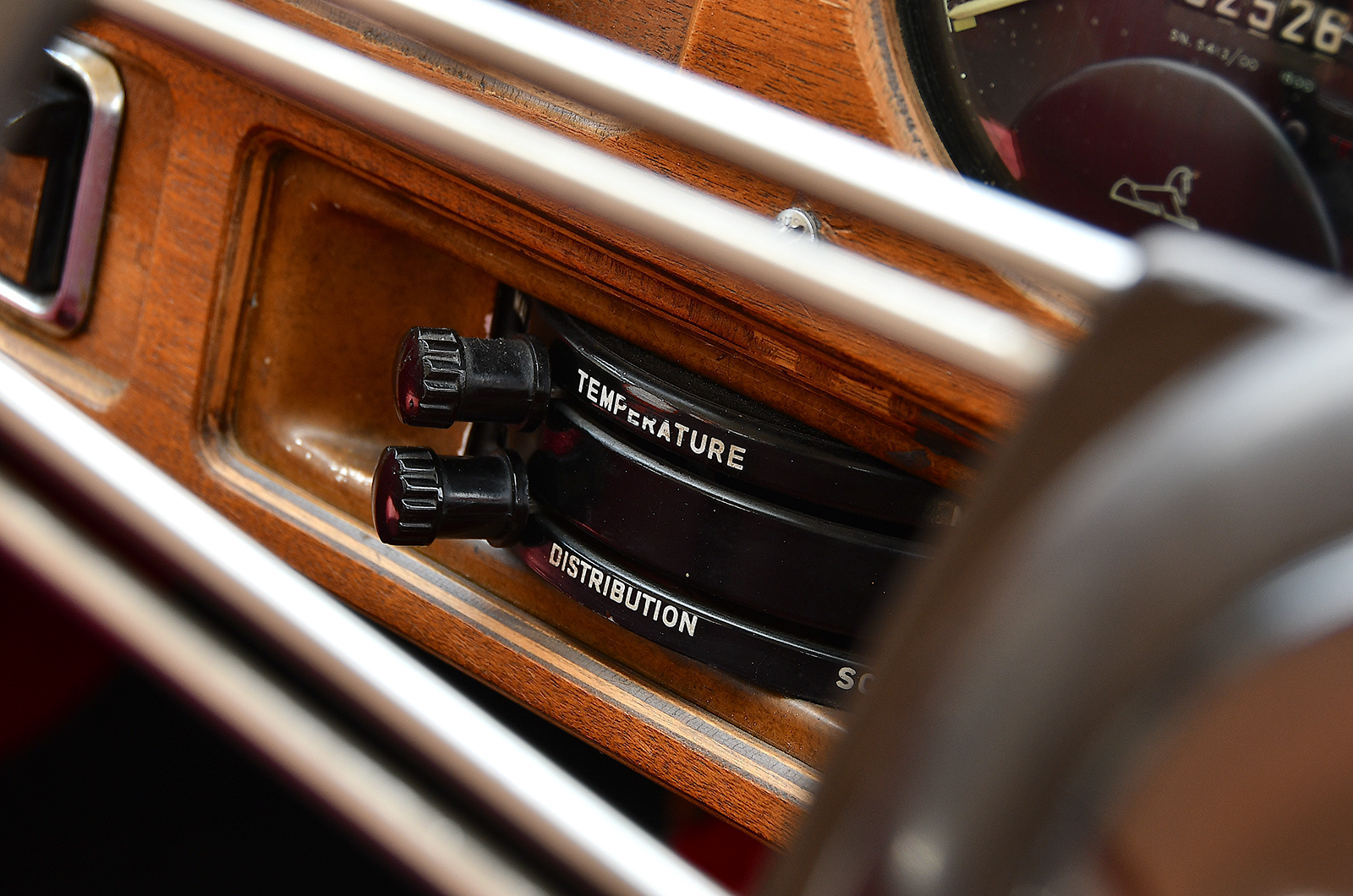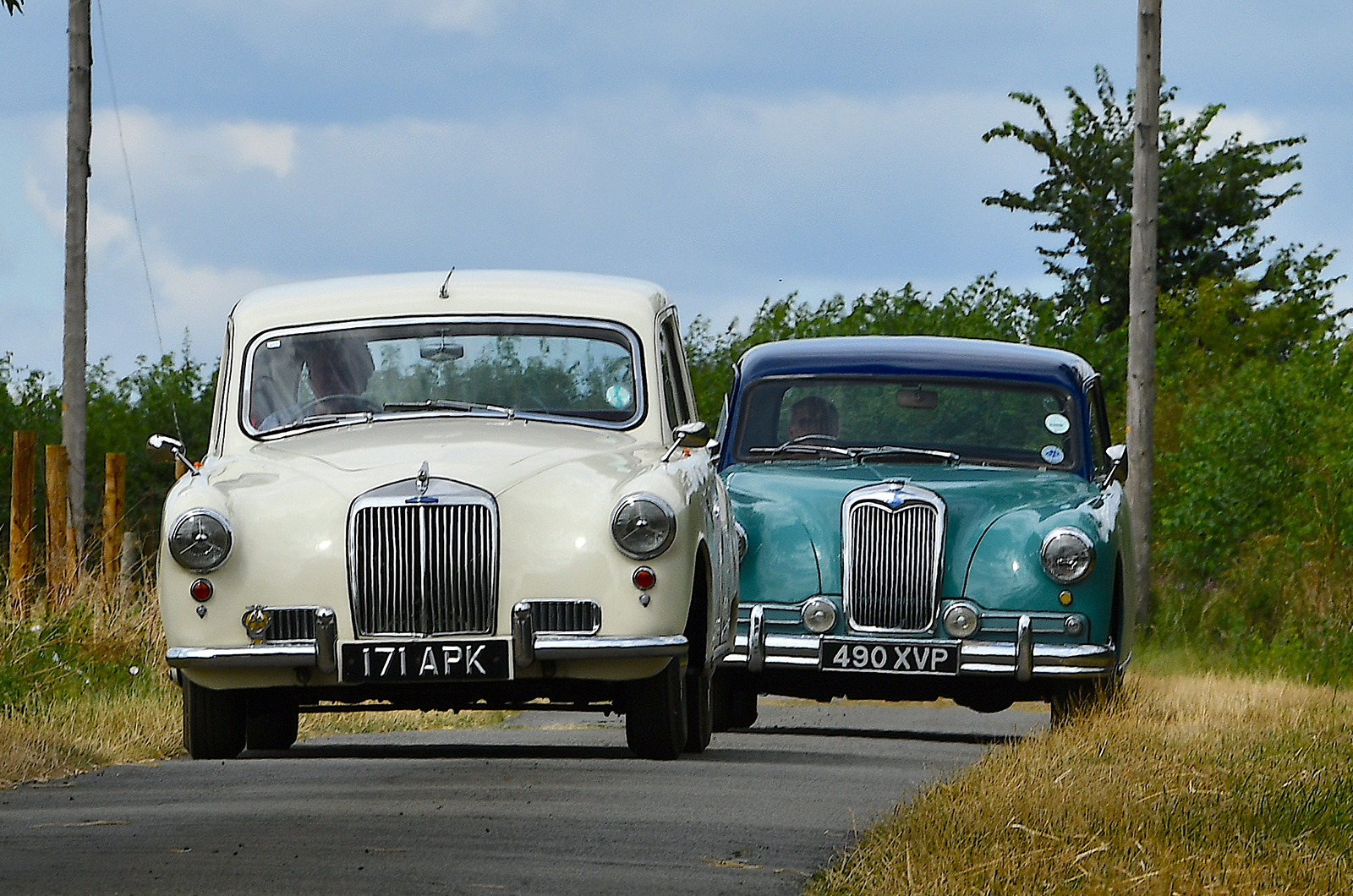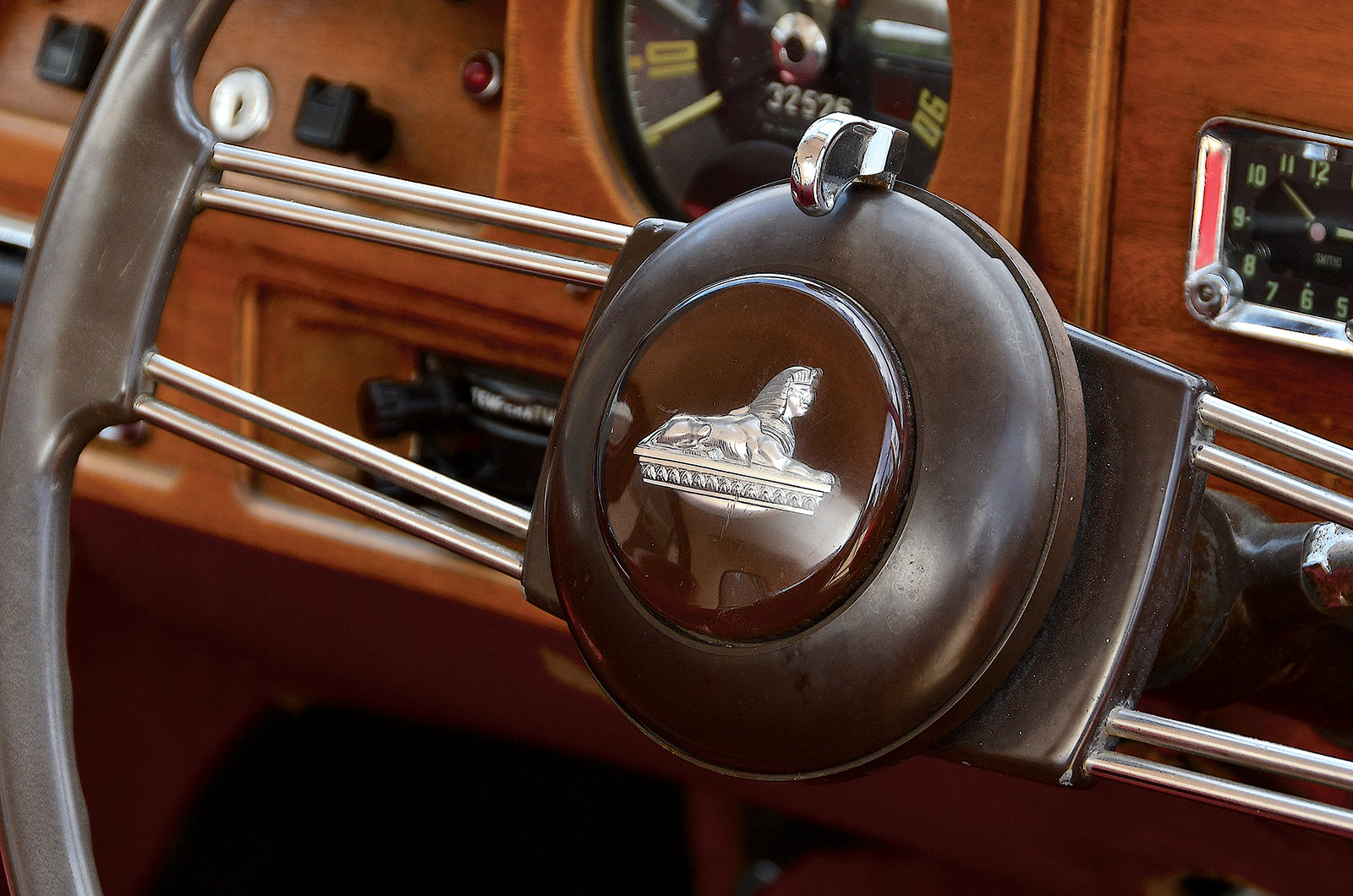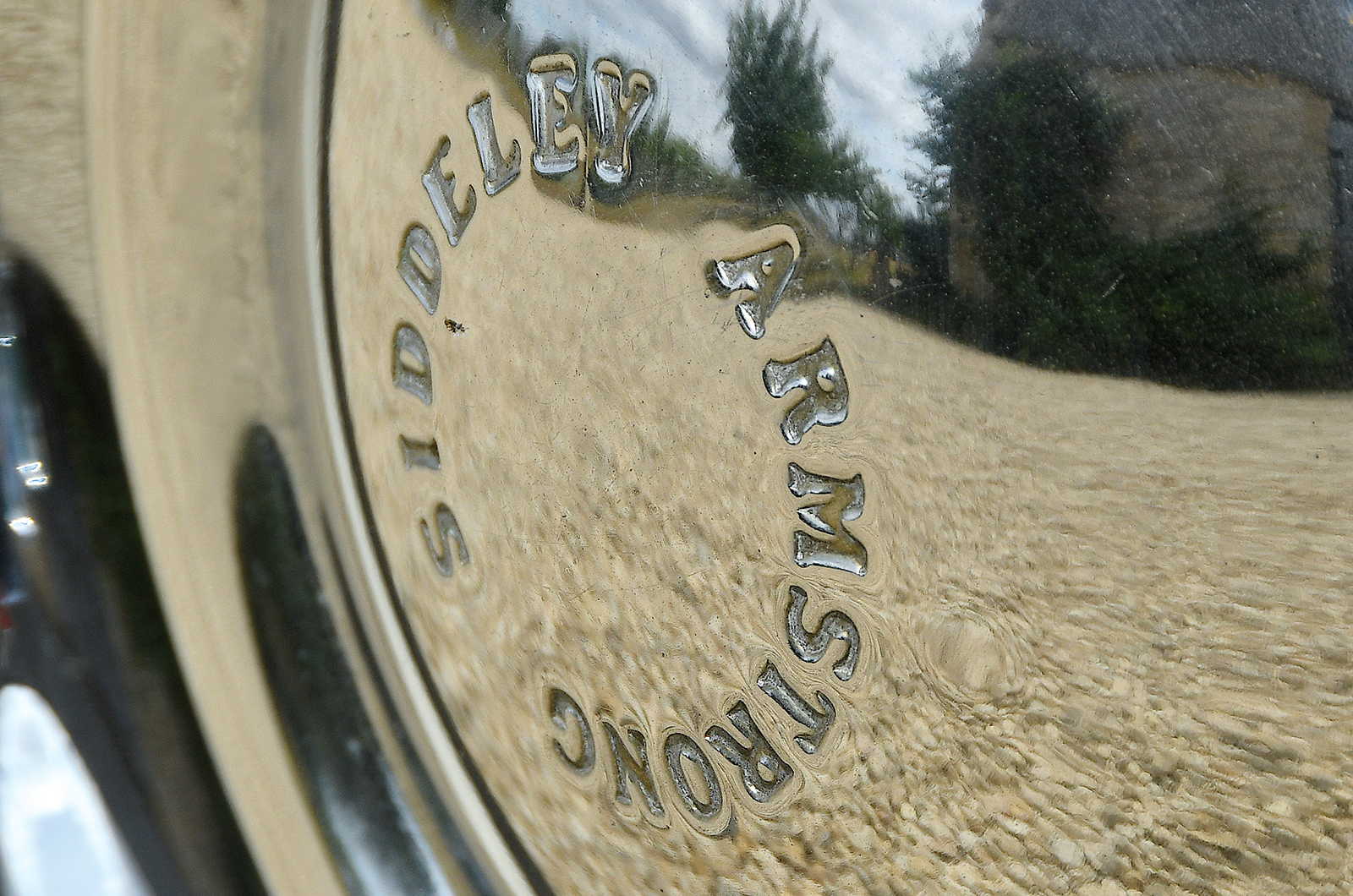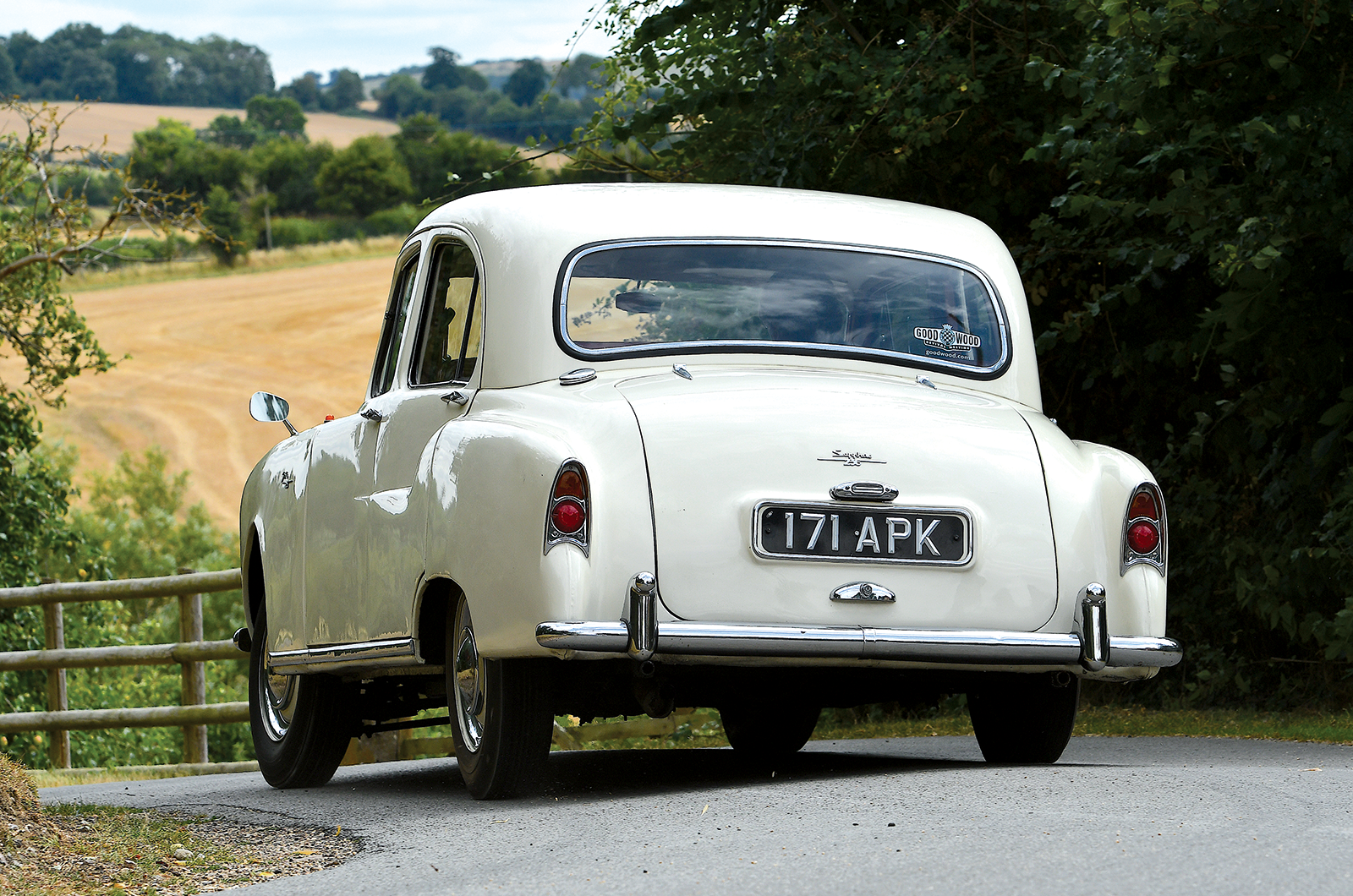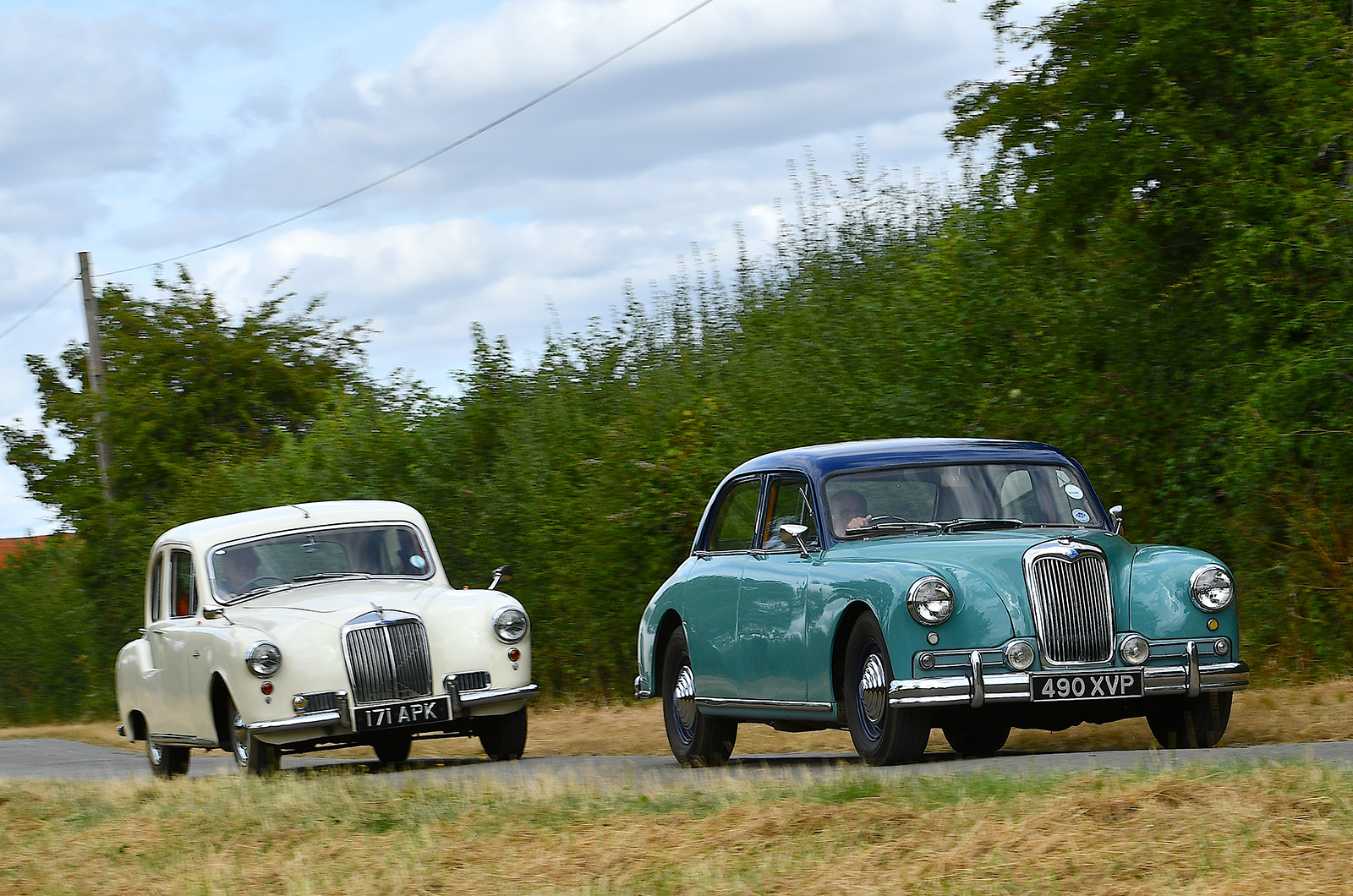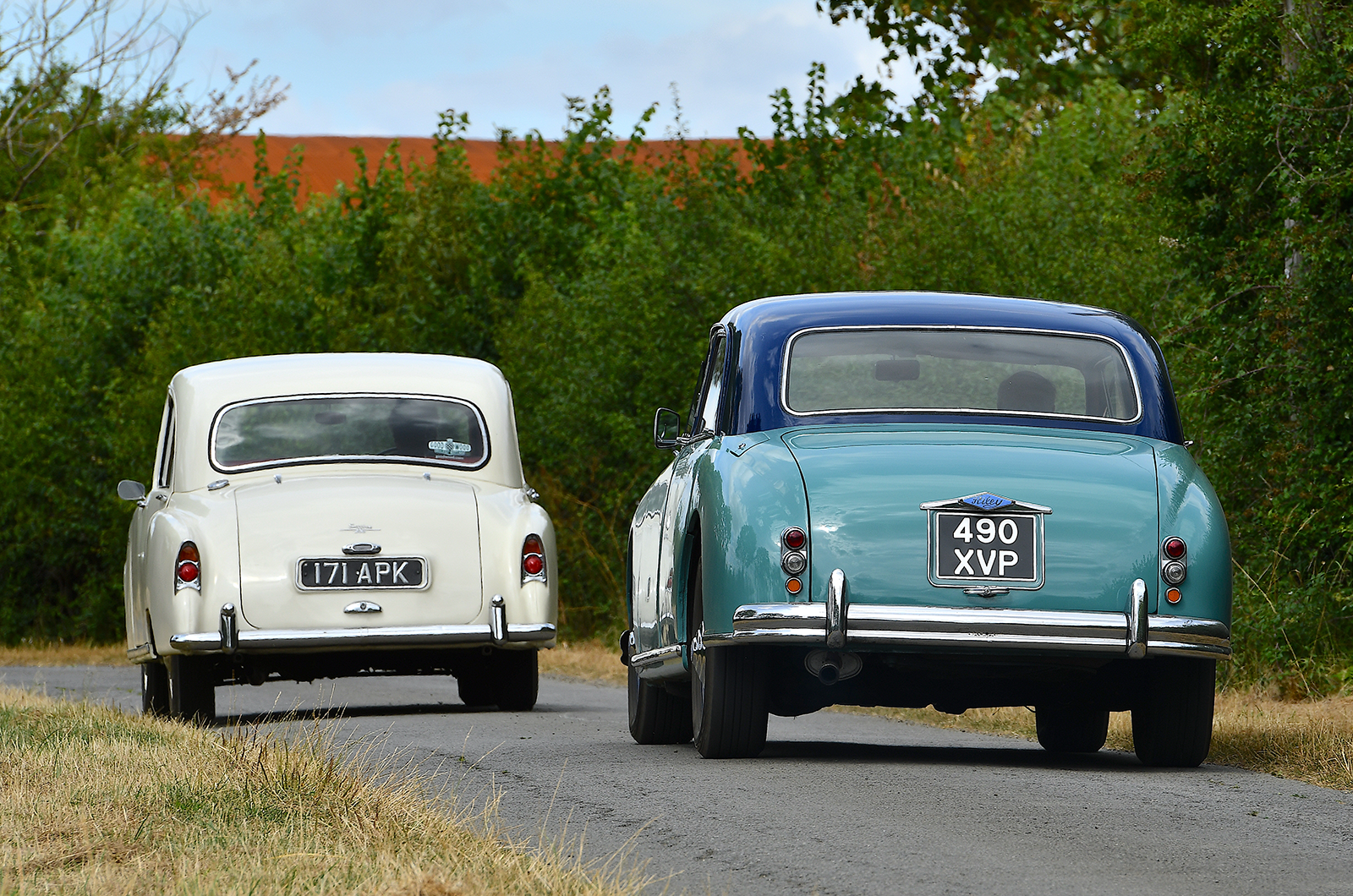For reasons less obvious, all four doors of the 236 open to a full 90º, yet its designers appear to have overlooked the need for a well-sized boot when they gave it that droopy, unappealing tail.
The Riley’s luggage area, in contrast, is huge. Both cars are spacious overall, with ample leg and shoulder room.
The Pathfinder must have been one of the last cars with trafficators – a feature most modern drivers don’t even acknowledge – and both cars predate column-stalk controls, seatbelts, or anything we would recognise as ‘ergonomics’.
The company’s sphinx mascot sits atop the Armstrong Siddeley’s front grille
They share quite a few features, including position-holding door catches, but only the Armstrong is distinguished by a ‘quick action’ lever for the driver’s window.
Massive steering wheels give you the necessary leverage for parking, while wooden dashboards underline the cars’ prestige appeal.
The 236 inherited its central control layout of liquorice allsorts-style switchgear from its big sibling, along with a two-spoke wheel that pivots around the fixed, sphinx-branded centre horn push.
A nifty feature of the Riley is a chrome horn ring that clicks left and right to double as an indicator switch.
A wooden dashboard underlines the Armstrong Siddeley 236’s prestige appeal
Leg space between the helm and the seat is at a premium in the Riley, which has an impressive slab of walnut with a large speedometer and rev counter in front of the driver.
Its lovely circular radio speaker brings to mind cricket commentary and the warm, comforting tones of the Home Service. This ex-South Africa Pathfinder has Rexine-covered seats, with an optional front bench giving room for six.
The Armstrong offered manual – with or without overdrive – or preselector gearboxes on the 236, but well over two thirds, including this car, had the Manumatic four-speed gearchange, also with overdrive and a central lever.
It adds interest to driving the 236, but smooth progress is a hit-and-miss affair at times.
‘What they lack in terms of things we take for granted in modern cars, they more than make up in charm and character’
The popular, AP-supplied system works well after a fashion. With no clutch pedal to control it is a boon in traffic, but the change cannot be rushed.
Equally, indecisiveness can leave you with a box full of neutrals halfway through a roundabout. It’s easy to snatch the wrong gear in a panic if you feel you are holding up traffic.
Moving away in first or, better yet, second, the clutch engages with a light jolt as you squeeze the throttle, and the 236 ambles forward with a smooth hiss from its willing and refined overhead-valve straight-six.
The Armstrong Siddeley’s massive steering wheel gives the necessary leverage for parking
Virtually inaudible at tickover, it will cruise the Siddeley at 70mph in overdrive top, but has to be worked very hard if you want anything approaching meaningful acceleration.
There is a natural tendency to drive defensively in a car that is so much slower than everything else around it on today’s roads.
Steep gradients are not this engine’s forte, and it is long and heavy enough to have very obvious effects on the handling: there is lots of run-wide understeer, tyre scrub and hefty, ponderous steering.
The Armstrong Siddeley 236’s chrome wheels are more basic than the Riley Pathfinder’s
In search of positives, the Armstrong Siddeley does not roll or wallow all that much, stops in a straight line and has the feel of a smooth-riding, well-made car that is, above all, determined to get you to your destination.
The stable and predictable Riley has lighter, less dead-feeling steering than the Armstrong, and less understeer.
You can push it through corners without making yourself conspicuous, but four turns lock-to-lock – with a fair bit of slop around the centre – means plenty of feeding the steering wheel, in a style familiar to the Hendon Police College.
The ‘Baby Siddeley’ still shows its bulk on the road
Though 500lb heavier than the Armstrong, it does not feel it on the road, partly thanks to its lusty, 25bhp-stronger twin-carb engine with the longest stroke of any production car in the world at the time.
Its lumpy, semi-vintage throb smooths out nicely as you accelerate, but the promise of Bentley-style, knife-through-butter changes from the right-handed lever soon evaporates.
Even getting the right slot is pot luck at first with its vague linkage. Still, you do most of your driving in third gear – and an elastic top that will take half throttle from 10mph.
The Armstrong Siddeley (left) and Riley remind you of the challenges of ’50s motoring
To drive the lively Pathfinder on the sort of gently rolling A-roads it was developed on is far from a chore.
Viewed through a generously Vaseline-smudged lens of nostalgia, both the Riley and Armstrong Siddeley drive quite well, all things considered.
What they lack in terms of things we take for granted in modern cars, they more than make up for in charm and character.
They are certainly character-building to pilot, taking you back to a period when driving required anticipation, good judgement and a certain level of commitment.
‘They are certainly character-building to pilot, taking you back to a period when driving required anticipation, good judgement and a certain level of commitment’
While such things are ignored – or even celebrated – in most ’50s sports cars, we tend to judge saloons of the same period more harshly.
Yet there is a fascination in these ‘new Elizabethan era’ British saloons that transcends their shortcomings.
Images: John Bradshaw
Thanks to: Mark Elder at The Motor Shed
Factfiles
Riley Pathfinder
- Sold/number built 1953-’57/5152
- Construction steel chassis and body
- Engine all-iron, ohv 2443cc ‘four’, twin SU carburettors
- Max power 110bhp @ 4400rpm
- Max torque 134Ib ft @ 3000rpm
- Transmission four-speed manual, RWD
- Suspension: front independent, by wishbones, torsion bars rear live axle, coil springs (later semi-elliptic leaf springs), radius arms, Panhard rod; telescopic dampers f/r
- Steering worm and roller
- Brakes drums
- Length 15ft 3in (4648mm)
- Width 5ft 7in (1708mm)
- Height 5ft (1524mm)
- Wheelbase 9ft 5in (2883mm)
- Weight 3486Ib (1549kg)
- 0-60mph 16.7 secs
- Top speed 102mph
- Mpg 21
- Price new £1240
- Price now £12,000*
Armstrong Siddeley 236
- Sold/number built 1955-’57/603
- Construction steel chassis, aluminium-alloy body
- Engine all-iron, ohv 2309cc straight-six, single Stromberg carburettor
- Max power 85bhp @ 4400rpm
- Max torque 118Ib ft @ 2750rpm
- Transmission four-speed Manumatic with overdrive, RWD
- Suspension: front independent, by coil springs, wishbones, anti-roll bar rear live axle, semi-elliptic leaf springs; lever-arm dampers f/r
- Steering worm and roller
- Brakes drums
- Length 13ft 2in (4013mm)
- Width 5ft 8½in (1740mm)
- Height 5ft 1¾in (1568mm)
- Wheelbase 9ft (2743mm)
- Weight 2700Ib (1225kg)
- 0-60mph 15.5 secs
- Top speed 88mph
- Mpg 25
- Price new £1565
- Price now £15,000*
*Prices correct at date of original publication
Enjoy more of the world’s best classic car content every month when you subscribe to C&SC – get our latest deals here
READ MORE
How the other half lived: Bentley MkVI vs Armstrong Siddeley Sapphire 346
Austin A90 Atlantic vs Riley RMC: missing the mark in style
Wolseley 4/44: from £15 cast-off to lifelong friend
Martin Buckley
Senior Contributor, Classic & Sports Car
